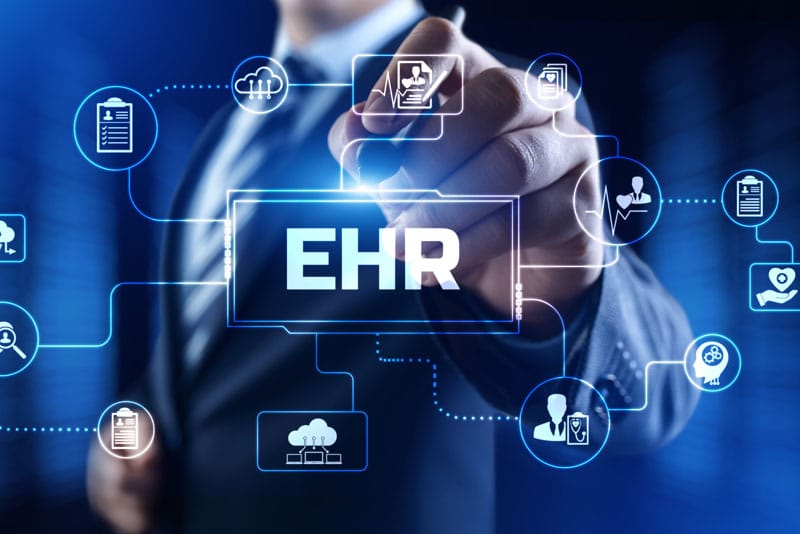
Table of Contents
Almost a decade has passed since it became mandatory for healthcare providers to switch to electronic health records (EHRs). However, usability issues persist, and increased documentation requirements and shifting federal regulations have led to higher workload and physician burnout. Data collection and documentation using EHRs are key to quality care and patient safety, care quality, and provider accountability and efficiency. Medical transcription services are a widely accepted strategy to reduce unproductive keyboard time. Experts have put forward various other strategies to help medical practices optimize EHR use and documentation, enable providers to find the information they need quickly, increase face-to-face time with patients, enhance patient safety, and decrease provider burden.
According to the Healthcare Information Management Systems Society (HIMSS), EHR usability is “The effectiveness, efficiency and satisfaction with which specific users can achieve a specific set of tasks in a particular environment. In essence, a system with good usability is easy to use and effective. It is intuitive, forgiving of mistakes and allows one to perform necessary tasks quickly, efficiently and with a minimum of mental effort.”
In a study conducted by Mayo Clinic and the American Medical Association (AMA), most providers assigned EHR usability an “F” grade. Optimizing EHR documentation is closely associated with maintaining and improving EHR usability.
Here are Four Top Ways to Improve EHR Usability and Documentation
- Optimize the EHR interface: This involves tweaking the EHR system to meet the practice’s individual needs and improve clinical productivity and efficiency. EHRs need to be easy to navigate and ensure usability and interface features that the clinician needs. On the other hand, an EHR with a cluttered interface can have disastrous consequences. Among other things, it can affect medication prescription and lead to repetitious or unnecessary test ordering. A well-designed and simple-to-use interface with aids to alert the physician will significantly improve patient care and provider satisfaction and productivity. A user-friendly, high-performing EHR interface will record, maintain and manage data on a patient, so that caregivers have the right information at the right time to make the best possible decisions for patients.
- Conduct tests to maintain EHR usability: Keeping the EHR up-to-date is crucial for usability and good documentation. An EHR Intelligence report recommends conducting internal tests to maintain EHR usability throughout the system’s life. The report recommends that after EHR implementation, ‘summative’ testing should be completed. Such tests include expert review, performance testing, risk assessment, and usability testing.
EHR vendors use the validated system usability scale (SUS) to assess satisfaction with product ability. According to researchers, a score of 80 is above average while 68 is an average benchmark response. The vendor can use this feedback to improve EHR design. Health systems can also use the test results to improve optimization.
- Provide EHR training: Several studies have highlighted the importance of training to optimize EHR use and documentation. EHR technology is continuously updated, and investing in learning for clinicians on EHR functionality can address several challenges including documentation concerns. Progress notes support medical decision-making, patient-provider communication, critical thinking, billing, and institutional coding. For patient safety and patient care, clinicians need to know how to effectively and efficiently document progress notes in the EHR. Training is crucial for this. Residents grasped the details and intricacies of EHR documentation after EHR training workshops, according a study published in the Association of American Medical Colleges’ Training can also help users better navigate the EHR interface instead of implementing a new system, according to the EHR Intelligence report.
- Harness technology: Technologies such as voice recognition, digital scribes, and connected devices automate and speed up the documentation and reduce clinician time spent on EHR data entry tasks. A Medical Economics report highlighted the increasing use of EHR-integrated apps for a wide variety of functions such as scheduling, check-in and billing, clinical functions, care management and patient engagement. The article references Micky Tripathi, national coordinator for health information technology at the U.S. Department of Health and Human Services as saying that these apps are the key to unlocking more functionality from EHR systems and directly addressing physician frustration.
- Medical transcription outsourcing: Quality in EHR documentation is typically measures based on elements such as completeness, accuracy, clarity, and timeliness. Outsourced medical transcription services are a reliable option to improve the quality and timeliness of medical documentation, without additional capital investment. Experienced medical transcription companies provide EHR integrated transcription for all specialties, from family practice, physical therapy and cardiology transcription to pain management, nephrology and radiology transcription services, to name a few.
Areas to Focus on to Improve EHR Use
Medical practices can address clinical burnout and improve EHR documentation by focusing on four key areas: improving patient care, boosting physician productivity, ensuring accurate reimbursements, and cutting operational expenses. Outsourcing medical transcription to a company that provides services can help practices optimize EHR documentation, enhance patient care, and reduce operational costs.


